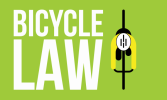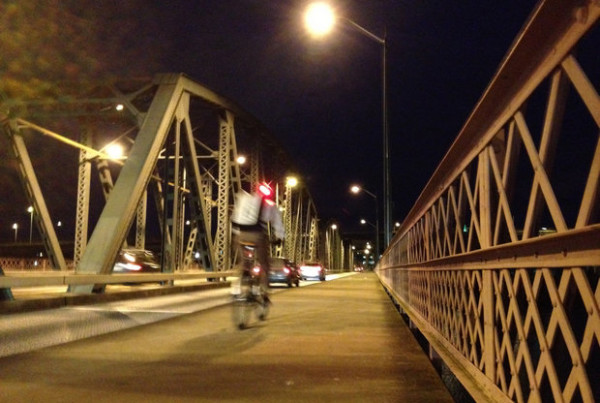TreeHugger: Green Box Biking and Safety: It’s All in Our Heads
by April Streeter, Gothenburg, Sweden on 01. 6.10
CARS & TRANSPORTATION (bikes)
Portland, disputedly still American’s premier cycling city, has been experimenting with 14 bike boxes – road markings that designate exactly where cyclists and motorists should place their vehicles when stopped at an intersection with a red light. Bike boxes are this city’s attempt (also being deployed in New York, Long Beach, and maybe San Francisco) to try to reduce cyclist deaths from “right hook” collisions by making cyclists more visible to drivers. In the past year, researchers Jennifer Dill and Chris Monsere took hours and hours of video and surveyed both motorists and cyclists to try to answer the question: Do Portland’s bike boxes work?
What Dill and Monsere found in their research is really interesting, though not all that definitive in answering the question. They took 48 hours of video (and thoroughly analyzed 3 of the 48 hours) and surveyed over 400 cyclists and 700 motorists to find out if the boxes actually helped make cyclists more visible to motorists and thus, hopefully, lead to reducing the conflicts that could lead to right hook collisions.
What they found, in a nutshell, is that most motorists recognize what a bike box is meant to do. Generally, there are not more conflicts at the surveyed intersections after a bike box is painted there. Conversely, there are not necessarily statistically fewer conflicts either. However, people’s perceptions of safety definitely improved when the bright green bike boxes are painted, the survey data found.
Over half of motorists thought intersections were a little or a lot safer with the bike boxes. And over 75% of cyclists thought similarly.
What Dill is implying is that thus far the analysis of the data hasn’t revealed a signficant reduction in conflicts when a bike box is put in, only a perception that the boxes make the roads safer. Perhaps that perception is based on the fact that that green bit of roadway is simply a good visual that can remind a motorist to look out for a cyclist.
Though the research isn’t extensive enough to prove it, there seems to be a loose common-sense consensus that the green boxes are most helpful when cyclists and motorists are stopped, and least effective when cyclists and motorists approach an intersection on a green light. To help the moving right hook conflict, Portland also is starting to the extra step of extending the green pathway out into the intersection as a further signal to turning drivers they are entering a space where they might expect to see a bike.
An interesting side note in the research is that thus far it doesn’t seem to make a data difference whether the white-outlined bike boxes are painted green or left plain (3 in Portland are plain), yet in the surveys an overwhelming 89% of motorists said they preferred the boxes be green.
Robert Burchfield, the City of Portland’s Traffic Engineer, says Portland’s current bike boxes were put in place as part of an Federal Highway Administration (FHWA) experiment, and that adding more in the city would require either a request to FHWA to expand the bike box program, or going through other channels to explore funding for more boxes.
In any case, FHWA requires an evaluation, and the City plans to use Dill’s and Monsere’s research report, when it is published some time in the next six months, as the basis of the evalution it will submit.
In the meantime, Dill and Monsere and graduate students will now go back to the hours of unseen video data to mine it more thoroughly for “conflicts” and analyze it more deeply before writing up the report. Across the country in New York, unpainted bike boxes are sprouting everywhere. In California, Long Beach has some, San Francisco can’t quite seem to get it together. Yet.
In the meantime, no right hook fatalities yet reported this year. Happy 2010.
Read more on TreeHugger about safety and urban cycling:

